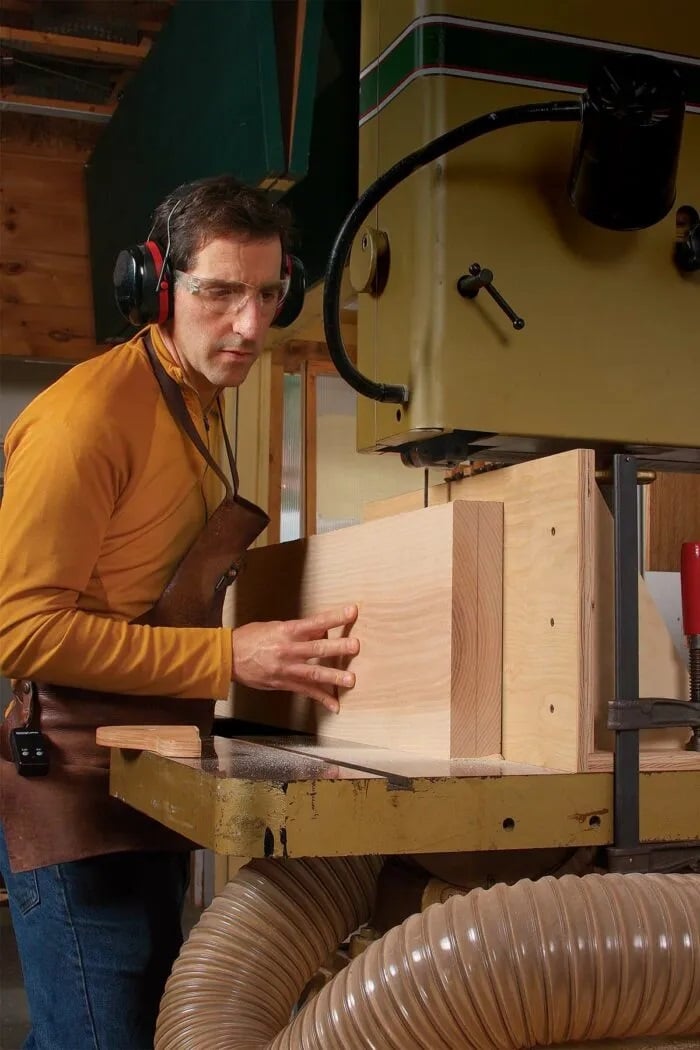Understanding Resawing On A Bandsaw – A Short Guide

Resawing is a fundamental woodworking technique that involves slicing a thick board into thinner slabs, enabling woodworkers to create book-matched panels, veneers, or custom thicknesses for various projects. Mastering resawing on a bandsaw enhances material efficiency and opens up new design possibilities. This guide will walk you through the essentials of resawing, including blade selection, setup, and safety considerations.
Understanding Resawing
Resawing differs from standard ripping; while ripping cuts through a board’s thickness, resawing cuts through its width. This process requires precision to achieve straight, smooth cuts that minimize waste and reduce the need for extensive planing or sanding.
Choosing the Right Blade
Selecting an appropriate bandsaw blade is crucial for successful resawing. Consider the following factors:
- Tooth Per Inch (TPI): A blade with 3 teeth per inch (TPI) is ideal for resawing. This configuration provides large gullets between teeth to efficiently clear sawdust, preventing the blade from binding and ensuring a smoother cut.
- Blade Width: A wider blade offers greater beam strength, which helps maintain straight cuts. However, ensure your bandsaw can accommodate the chosen blade width.
- Blade Type: The Wood Slicer Resaw Bandsaw Blade is renowned for its thin kerf and precision cutting, making it a popular choice among woodworkers for resawing tasks.
Setting Up Your Bandsaw
Proper setup of your bandsaw is essential for accurate resawing:
- Blade Tension: Ensure the blade is tensioned correctly according to the manufacturer’s specifications. Adequate tension helps the blade track properly and reduces deflection during the cut.
- Blade Tracking: Adjust the upper and lower wheels so that the blade runs centrally on the tires. Proper tracking prevents the blade from wandering during the cut.
- Guide Bearings: Position the guide bearings or blocks close to the blade without touching it. This support minimizes blade deflection and enhances cutting accuracy.
- Fence Alignment: Align the fence parallel to the blade’s path. Some blades may exhibit a natural drift; in such cases, adjust the fence to match the blade’s drift angle to maintain straight cuts.

Resawing Techniques
Implementing effective techniques will improve your resawing results:
- Feed Rate: Feed the workpiece at a consistent, moderate pace. Feeding too quickly can cause the blade to drift or produce a rough cut, while feeding too slowly may burn the wood.
- Point Block Method: For minimal setup, use a point block (a single point fence) to guide the wood. This method allows you to adjust for blade drift manually by steering the workpiece along a marked line.
- Straight Fence Method: For multiple, consistent cuts, use a tall, straight fence adjusted to the blade’s drift angle. This setup provides support for the workpiece and ensures uniform thickness across cuts.
Safety Considerations
Always prioritize safety when resawing:
- Push Blocks and Sticks: Utilize push blocks or sticks to keep your hands at a safe distance from the blade, especially when finishing a cut.
- Avoiding Blade Binding: Ensure the workpiece is flat and stable. Irregular or warped wood can cause the blade to bind or the workpiece to kick back.
- Protective Equipment: Wear appropriate personal protective equipment, such as safety glasses and hearing protection, to safeguard against dust and noise.
Maintaining Your Bandsaw Blade
Regular maintenance of your bandsaw blade extends its lifespan and ensures optimal performance:
- Cleaning: Resin and sawdust buildup can dull the blade and affect cutting accuracy. Clean the blade regularly using a blade and bit cleaner to remove deposits.
- Lubrication: Applying a blade lubricant can reduce friction, minimize heat buildup, and prevent resin accumulation during cuts.
By understanding the nuances of resawing and implementing these guidelines, you can achieve precise, smooth cuts that enhance the quality and efficiency of your woodworking projects.
Comments
Add comment